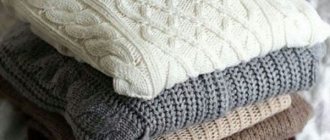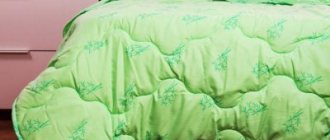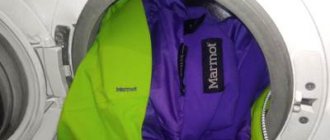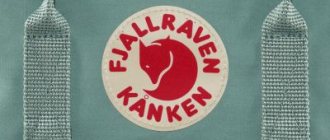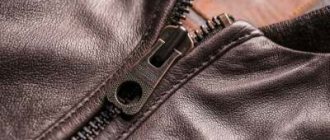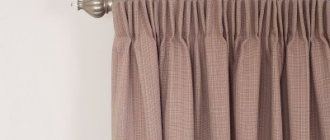Cotton is a natural material, products made from it are hypoallergenic, breathable, non-electrifying and pleasant to the touch.
But they get dirty quickly and are difficult to wash. And if washed incorrectly, they can fade, turn yellow or shrink.
Only if you know how to wash cotton correctly, at what degrees, how to dry it and what mode to iron, you can maintain the attractive appearance of your favorite things for a long time.
How to choose a detergent?
First of all, you need to choose the right detergent. There are many powders, gels and liquids on sale now.
You need to take those that are designed for washing cotton fabrics . They contain substances that soften water.
All of them also contain compounds that dissolve fat and protein stains on fabric. They usually work even in cold water. Detergents may contain surfactants, enzymes, and phosphates.
Powders containing bleaches are also used for cotton .
Optical or oxygen ones are best, they are safer for fabric. But such products are used only for white fabrics; colored linen must be washed with special powders, they must be marked “for colored linen”. For children and people with allergies, you need to choose products with a special mark. They do not have a strong aroma and are easier to rinse out of fabric.
It is also important to choose the right form of detergent. The dosage, effectiveness, and application features depend on this:
- Powders are divided into hand and machine washable products .
The latter are characterized by reduced foaming. For cotton, the powder is best used. Disadvantages include impracticality, complexity of dosage and poor dissolution in cool water. The most popular powders for cotton fabrics include: “Persil”, “Dosya”, “Aist”, “Sorti”, “Losk”.
Gel is more economical and safe .
It can be used at temperatures from 300. For washing delicate items, it is better to use gel, as it preserves the color and softness of the fabric. But it cannot be used at high temperatures. Wellery, Power Wash, Pigeon gels are the best to wash.- Capsules are used in a washing machine .
They are economical and dissolve well even in cold water. The capsules remove stains well and retain color, but have a strong aroma and are not recommended for use on children's laundry. It is worth paying attention to Persil Duo-Caps, Ariel Color 3 in 1, Tide 3 in 1 Pods Color, Losk Duo-Caps.
Some housewives use folk remedies for washing cotton the old fashioned way. Best for cotton
- soda ash,
- salt,
- laundry soap.
Ammonia and hydrogen peroxide are used to remove stains.
It is not recommended to use chlorine-based bleaches. They damage the fibers of the fabric and can cause it to turn yellow.
How to hand wash cotton
Hand washing is recommended for delicate cotton fabrics such as muslin, chintz, voile. They have a thin structure and can be damaged when machine washed. Products decorated with special decor: beads, sequins, rhinestones, metal elements are also hand washed. Fabrics with embroidery, appliques and lace trim are also recommended to be washed by hand.
The hand washing process is as follows:
- Dissolve the required amount of detergent in a container with hot or warm water. If required, use a stain remover first.
- The products are first soaked for 30-40 minutes.
- Then carefully wash off the dirt, trying to gently rub the material.
- Next, rinse the items thoroughly at least 2-3 times. During the rinsing process, you can add conditioner or table vinegar to the water, then the fabric will become softer and easier to iron.
As for the spin cycle, the main thing here is not to overdo it. If thin cotton is twisted too much, there is a risk of damage to the fibers. Therefore, items made from thin cotton fabrics are often dried without spinning on hangers.
As for how many degrees washing occurs, then, as a rule, this figure does not exceed 40°
Preparation for the process
A very important stage of washing is preparing things. This will help avoid deformation and discoloration. If you wash colored clothes together with light ones, they may fade.
Delicate items need to be taken away. They are washed separately at a temperature not exceeding 400.
Before putting cotton laundry into the machine, you need to do the following:
divide things by color, separate white linen (read about washing white linen here), separately colored linen;- sort them by degree of soiling; heavily soiled or stained items are washed separately;
- It is recommended to turn the clothes inside out, fasten all zippers and buttons, and empty the pockets;
- It is better to put small items in mesh bags; it is also recommended to wash duvet covers in them, this will prevent other laundry from getting inside;
- If the item is washed for the first time, you need to carefully study the label; it indicates at what temperature it should be washed, how to dry and iron it correctly.
More serious treatment is required for stained laundry. In order for them to wash off, it is recommended to remove them first. To do this, the item is pre-soaked for several hours.
conclusions
If we consider how to wash cotton so that it does not shrink or become deformed, you should:
- Prepare items for the process by turning them inside out and securing fasteners and buttons.
- Select the appropriate mode on the washing machine or prepare a solution for hand washing.
- If heavily soiled, the product will need to be soaked and washed.
- If shrinkage occurs accidentally, the cotton will need to be softened and given the required shape using one of the above methods.
- Dyeing items made of cotton and softcotton should be done in accordance with the instructions for the dye and only after washing the product.
At what temperature?
The washing temperature depends on the type and color of the laundry . White items, especially those made of thick fabric, can withstand temperatures up to 950.
But such modes are not recommended to be used often, since cotton can become deformed and the fibers gradually become thinner. Therefore, high temperature is used when stains need to be removed.
Regular washing of white items takes place at 40-600 . It is recommended to soak or boil shirts, towels and other heavily soiled items made of thick fabric first. This will help restore whiteness.
Colored linen may fade at high temperatures and the color will fade. To maintain its brightness, it is not recommended to choose a mode higher than 400. Only dark and stubbornly colored items can be washed at 600, but not higher.
It is best not to put thin, delicate linen or lace in the machine . They are washed in cool water by hand, preferably with soap. It is also not recommended to machine wash items with fleece or pile.
You can check a colored item to see if it will fade. To do this, moisten a piece of cloth with soapy water and rub it with a white napkin. If it gets stained, it is advisable to wash this item separately or by hand.
Preparatory work
Washing cotton can be done either manually or in a washing machine; the temperature indicator will be important for this. To prevent shrinkage of items made from 100% cotton, it must be washed carefully.
Before washing cotton clothes, you need to do a little preparation, which looks like this:
- Cotton items must be sorted, whites must be washed separately from colored and dark ones. In addition, items with stains are placed in a separate pile. Before starting the main wash, stubborn stains of various origins are removed.
- Sorting is carried out according to the strength of the fabric; homespun, thick fabric is washed at higher temperatures; thin cotton will not withstand such stress.
- Items are separated according to the degree of contamination; heavily soiled items should not be placed in the same container with lightly soiled wardrobe items.
- Cotton shirts, jackets, and trousers should be washed inside out with buttons, zippers, and snaps fastened.
Before you start washing, carefully study the labels from the manufacturer, everything will be described there down to the smallest detail. The recommended washing temperature, the use of special products, and ironing rules will be indicated very precisely.
How to wash so that cotton items do not shrink?
How to wash cotton items in the washing machine and by hand so that they do not shrink?
In the washing machine
The easiest way to wash cotton is in a washing machine; you just need to choose the right mode and temperature. To do everything right, you can use the step-by-step guide:
- Sort things by color and degree of soiling.
Place in drum.- Add the required amount of powder.
- Set the temperature from 40 to 90, spin speed 500-800 rpm.
Select “Cotton” or “Delicate Wash” mode. It must be remembered that cotton shrinks not only from high temperatures, but also from strong spinning, so it is recommended to select maximum values only for coarse fabrics and bed linen. - For laundry, it is recommended to rinse twice to completely remove the powder.
Manually
Hand wash delicate items, thin clothes and linen. For this purpose, you should not pour water with a temperature above 40.
The process of washing such things is not complicated:
- First, dissolve the laundry soap powder or shavings well in water.
- Dip the item into the solution and leave for 10-20 minutes.
- Rinse gently with your hands, trying not to rub or pull the fabric.
- Rinse several times to completely remove detergent.
- Add a little conditioner or vinegar during the final rinse. This will give things softness.
- Do not twist it too much, just squeeze it a little, then straighten it and hang it to dry.
Handwash
This washing method is indispensable for embroidered items, items made of fine fabric, lace clothing and outfits encrusted with expensive accessories.
When washing, follow these rules:
- Washing temperature – from 37 to 40 degrees;
- Using a gentle detergent that does not contain chlorine or other aggressive substances;
- The material should not be rubbed too hard; it is better to do this with a soft brush;
- After washing, wring out the fabric lightly, but do not twist it under heavy load;
- Rinse the washed item in clean, cool water until any remaining detergent is removed.
What should I do to get it to shrink?
Sometimes it is necessary to reduce stretched clothing . It is easy to “plant” cotton; you need to use a higher washing temperature.
In the typewriter
You need to wash the item in the machine at a temperature of 60, if it is white and made of thick fabric, you can even set it to 90.
For shrinkage, spinning at maximum speed and automatic drying are also used. It is carried out at high temperatures, so the cotton always shrinks after it.
Handwash
You can achieve shrinkage of the product by hand washing . During the last rinse, you need to pour boiling water into the basin and add a little fabric softener.
The item is dipped into the solution and covered with something, possibly film. After 5 minutes, transfer to cold water, rinse a little and squeeze.
Variety of cotton
Cotton fabric is one of the most popular materials in the textile industry. This was facilitated by the practical, hygienic and aesthetic properties of the fabric, as well as its low cost. Cotton is the basis of such materials as denim, chintz, satin, and calico. It is used for both clothing and home textiles.
Thanks to a large selection of weavings, the industry has learned to produce cotton materials of different densities and structures. Since they are based on cotton fibers, in most cases the conditions for washing and drying them are the same.
How to remove blood, grease, and grass stains?
Heavily soiled or stained items should be pre-soaked . If the stains are ordinary, you need to dissolve a few spoons of powder in hot water, put the item in and leave it for a day. Some machines have a pre-wash or soak mode.
Stains are more difficult to deal with. To remove them, you can use industrial stain removers or folk remedies.
You can use one of the most common methods:
Dissolve 2 tbsp in 5 liters of hot water. any detergent for cotton washing. It is better to choose those that contain optical brightener or stain remover. Keep the item in the solution for at least 3 hours.- Dissolve a quarter of a bar of laundry soap in 5 liters of water. Grind it first. The solution is suitable for soaking delicate fabrics.
- If you add 9% vinegar to the saline solution, you can soak colored chintz and denim. Proportions for 10 liters of water 5 tbsp. vinegar and 3 tbsp. salt.
- Blood stains should be washed in cold water. Then lather with laundry soap and leave for half an hour.
- To get rid of greasy stains, apply a mixture of grated laundry soap, ammonia and turpentine to the fabric. Proportions 2:1:1.
- Clothes stained with grass should be washed with laundry soap. If that doesn’t help, pour hydrogen peroxide onto the stain and sprinkle baking soda on top. After this, rub a little with a soft brush.
- To remove stains from brilliant green, you need to rub the fabric with a solution of alcohol with lemon juice or ammonia.
How to bleach?
Only pure white items can be bleached . There is no need to boil them or soak them for a long time. Nowadays effective bleaches are produced, which are added with powder during washing. They help get rid of the yellow or grayish tint of old linen.
It is better not to use chlorine-containing products, as they damage the fabric. Oxygen or optical brighteners are just as good at removing stains. To increase efficiency, you can pre-soak the item in their solution.
You can return the whiteness of towels, tablecloths and linen with the following solution: add 1 tbsp per 10 liters. ammonia and 2 tbsp. hydrogen peroxide. You need to soak the item for 20-30 minutes.
A saline solution is suitable for handkerchiefs: 30 g of fine table salt per liter of water. This solution helps get rid of yellow sweat stains on white T-shirts or shirts.
Boiling
Thick white cotton items (such as dishcloths and towels) can be boiled to whiten or remove stains.
- To do this, use an enamel pan or basin.
- Pour water into a container, dissolve bleach in it (if necessary), put things in there and put on low heat.
- You can boil for 15-30 minutes.
- Then things need to be rinsed.
When washing cotton items, remember to carefully prepare and sort them. Pay attention to the type of weave, density, texture and color of the products. Also consider the manufacturer's recommendations when choosing a detergent and washing mode.
© 2022 textiletrend.ru
How to dry it, can it be ironed?
It is not recommended to machine dry cotton. High temperature will cause shrinkage. Automatic drying is only suitable for coarse fabrics . They will have a special sign on their label: a square, a circle in it, and 3 dots inside.
If a crossed out triangle is drawn, it means that the item can only be washed gently. It is advisable to dry the rest naturally.
After finishing washing, the items are taken out of the drum and straightened out well. Then they are hung on a special drying rack or on a rope.
It is better not to dry cotton items in the bright sun: white ones may turn yellow, and colored ones may fade . It is better to lay out delicate items on a flat horizontal surface, straightening out all the folds.
During ironing, maximum temperatures can be set only for coarse fabrics, bed linen, and towels. For delicate ones, it is better to choose a different mode.
To ensure that the item is ironed well, it is recommended to start ironing when it is still damp.
Drying
- Dry items flat to make ironing easier.
- It is better to hang it on hangers in the shade. Avoid exposure to direct sunlight, as white fabrics may acquire a yellowish tint and bright ones may fade.
- Automatic drying is allowed, but if the product is completely cotton, it is not recommended to prevent the cotton from shrinking.
- Cotton dries quite quickly, it is very important not to overdry it, but to iron it in a slightly damp state.
- If the laundry has completely dried, you can spray it with a spray bottle or iron it through damp gauze.
